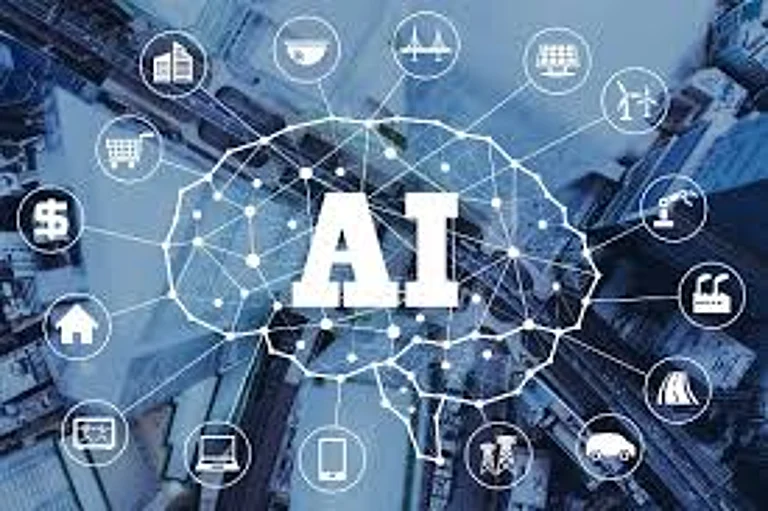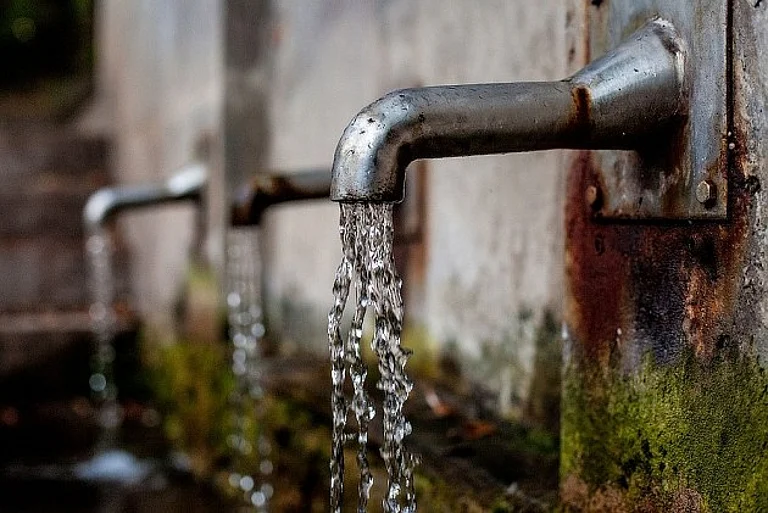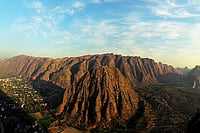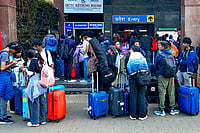In a much-awaited development amid countless speculations concerning the fate of the mission and the stranded astronauts, the uncrewed and faulty Starliner capsule reached the Earth on Saturday following a successful undocking from the International Space Station's (ISS) Harmony Module few hours ago.
The NASA astronauts Sunita Williams and Butch Wilmore, who remain aboard the ISS and are expected to return to the Earth on February 2025, earlier expressed full confidence in the flight control team managing the return. "It’s time to bring Calypso home. You’ve got this," Williams said of the Starliner while adding, "We’re supporting you all the way. Bring her back safely to Earth."
NASA's collaboration with Boeing on the Starliner spacecraft has been marked by a series of technical, logistical, and strategic challenges, leading to significant developments in recent months. Among the most significant is the impact on astronauts Sunita Williams and Butch Wilmore, whose mission plans have been altered as a result.
Boeing Starliner: A Mission With Challenges
The Boeing Starliner, also known as the CST-100, was developed under NASA’s Commercial Crew Program to serve as a crew transportation vehicle to the International Space Station (ISS). It was designed as an alternative to SpaceX's Crew Dragon, aiming to reduce dependence on Russian Soyuz spacecraft. Despite Boeing's prestigious standing in aerospace, the Starliner program has faced delays and setbacks, notably in test flights and technical readiness.
One of the central issues revolves around NASA and Boeing's differing assessments of when the Starliner would be ready to carry astronauts back to Earth. Initially, the spacecraft was expected to launch astronauts such as Sunita Williams and Butch Wilmore to the ISS and bring them back. However, recent reports suggest that Williams will no longer be returning from space aboard the Starliner, signaling a significant change in NASA's plans.
Why Sunita Williams Isn’t Returning On Starliner
Sunita Williams, one of NASA's most experienced astronauts, was initially scheduled to return to Earth from the ISS aboard the Boeing Starliner. Technical delays, safety concerns, and program adjustments have led NASA to reconsider its plans. Boeing’s Starliner is not yet considered fully operational, leading to NASA’s decision to pull Williams from the mission.
NASA has clarified that its relationship with Boeing remains collaborative, but the agency’s confidence in the spacecraft's ability to safely transport astronauts back to Earth is still developing. NASA and Boeing are addressing technical flaws, but the timeline for when Starliner will be mission-ready remains uncertain.
NASA And Boeing’s Split: Redefining The Mission
A significant turning point in this ongoing situation came when NASA and Boeing announced a temporary “split” over the return of astronauts on the Starliner. NASA's reassessment of its return strategy does not indicate any major conflict between the agency and Boeing, but reflects the inherent risks involved in space travel. Boeing, for its part, remains focused on ensuring that all safety protocols are met before astronauts like Williams and Wilmore use the Starliner for return trips.
The Role Of Butch Wilmore And SpaceX's Dragon
Butch Wilmore, another key astronaut slated to travel aboard the Starliner, has also been affected by the mission's developments. However, recent reports indicate that both Wilmore and Williams will likely return on SpaceX's Crew Dragon, NASA's alternative spacecraft developed under the same Commercial Crew Program. Reports suggest that NASA has barred both astronauts from using Boeing's Starliner suits while aboard Dragon, highlighting how NASA’s protocols prioritize spacecraft-specific safety procedures.
The decision to use SpaceX’s Dragon capsule stems from the fact that Dragon has proven itself in multiple crewed missions, including safely returning astronauts from the ISS on several occasions. This safety track record gives NASA confidence in its use for this mission, especially as Boeing’s Starliner works through its technical kinks.
Spacesuit Issues And Logistics On The ISS
Logistics surrounding spacesuits have also posed a challenge for this mission. The ISS currently only has one SpaceX spacesuit available, a complication NASA has been working to address. As astronauts Williams and Wilmore prepare for their return on the Crew Dragon, ensuring that both have the appropriate spacesuits for the mission is crucial. NASA has clarified that this issue is being resolved and that the delay will not pose a major threat to mission operations.
Radiation Exposure Risks For Sunita Williams
Adding to the complexity of the situation is the fact that astronauts, including Sunita Williams, are exposed to elevated levels of radiation during their time in space. According to Mashable, Williams is currently experiencing radiation levels equivalent to hundreds of X-rays. Prolonged exposure to such radiation is a well-known risk for astronauts and can lead to long-term health complications, including cancer. While NASA closely monitors these risks, the extended delays in mission plans further underscore the importance of timely and safe returns for astronauts aboard the ISS.
What This Means For NASA And Space Exploration
The developments surrounding the Starliner mission raise broader questions about the future of NASA’s collaboration with commercial partners. While SpaceX has demonstrated the reliability of its Crew Dragon, Boeing's challenges with Starliner show that building a fully operational crew transport vehicle is a difficult endeavor.
For astronauts like Sunita Williams and Butch Wilmore, these changes mean adjusting their expectations and mission plans. The safety of crew members remains paramount, and NASA’s decision to delay the use of the Starliner for astronaut return highlights the agency's commitment to risk management.
While Boeing’s Starliner continues to undergo further development and testing, it remains a key component of NASA’s vision for the future of crewed space missions. For now, however, SpaceX’s Dragon capsule is the more reliable option, as NASA continues its journey toward diversifying its astronaut transport vehicles.
Latest Starliner Developments: Uncrewed Test Return
NASA has confirmed that it will livestream the uncrewed return of Boeing’s Starliner spacecraft to Earth on September 6, 2024. The spacecraft is scheduled to undock from the International Space Station (ISS) at 3:30 AM IST on Saturday and will land approximately six hours later in the White Sands desert, New Mexico—a designated landing site for many space missions. This mission is a critical test of the Starliner’s capabilities, providing essential data for its future crewed missions.
The Starliner’s landing will serve as a significant milestone in determining its operational readiness. If the test is successful, it may accelerate the spacecraft’s timeline for crewed missions, allowing Boeing to catch up with SpaceX’s Crew Dragon, which has already become NASA’s go-to for ISS crew rotations.
According to an official NASA blog post, “NASA astronauts Butch Wilmore and Suni Williams have finished packing Starliner with cargo and configuring its cabin for return. The duo closed Starliner’s hatch for the final time Thursday afternoon, readying the spacecraft for its uncrewed departure.” The return journey will be conducted in autonomous mode.
The story of NASA, Boeing’s Starliner, and astronauts Sunita Williams and Butch Wilmore reflects the inherent challenges of space exploration. Despite setbacks, NASA’s cautious approach ensures that the safety of its astronauts remains a top priority. As Boeing works to overcome its technical obstacles, the future of the Starliner mission remains a critical focus for both NASA and the broader aerospace industry.






.webp?w=760&auto=format%2Ccompress&fit=max&format=webp&dpr=1.0)



















